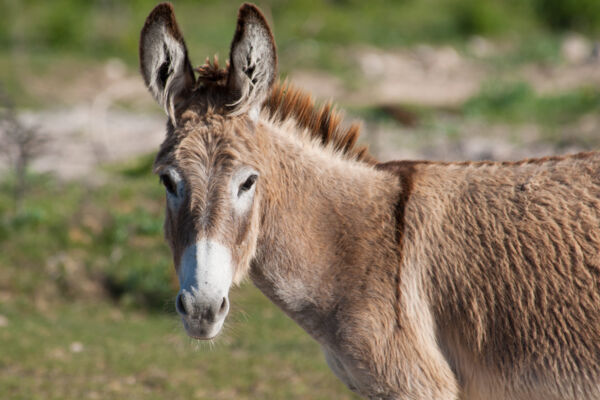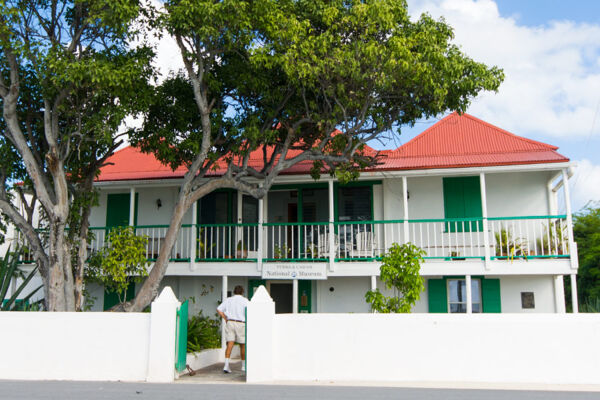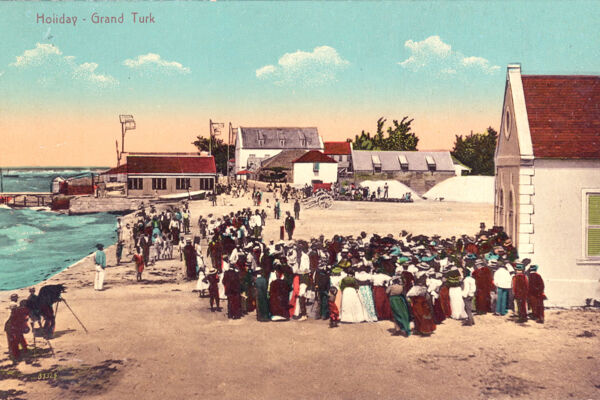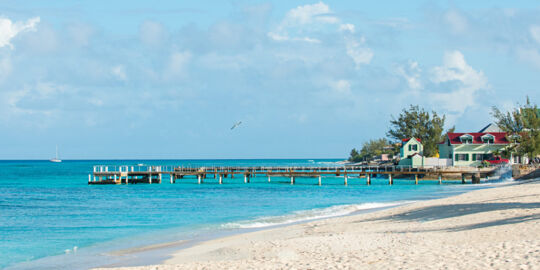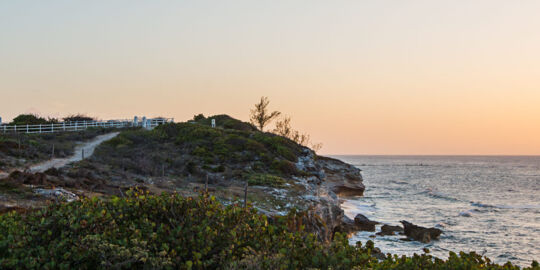History and Overview of Grand Turk
Grand Turk is an island in the country of the Turks and Caicos Islands, which is a British Overseas Territory that’s located in the tropical Atlantic between the Bahamas and the Dominican Republic.
Grand Turk is the historical center of the Turks and Caicos, and is the second most populated island in the country after the island of Providenciales. Our capital city of Cockburn Town is found on Grand Turk. In recent years, Providenciales has largely replaced Grand Turk as the primary site of government and commerce in the nation.
| Quick Facts | |
| Population | 4,831 (2012 Census) |
| Area | 6.9 mi² (18 km²) |
| Airport | Grand Turk Airport (GDT) |
| Best Beach | Governor's Beach |
| Highest Point | 89 feet (27 m) - Colonel Murray’s Hill |
Originally founded by settlers from Bermuda as a site for sea salt production in 1681, Cockburn Town on Grand Turk has been the official capital of the Turks and Caicos since 1766. Many of the country’s main government offices, including the Supreme Court and the Governor’s Residence, can be found here.
Several important historic events have taken place around this small island, including being the likely spot of Columbus’s first landfall in the New World, and the first dry land American astronaut John Glenn stepped foot on after orbiting Earth in 1962.
History
Tainos are believed to be the island’s first inhabitants. It’s believed that these peoples migrated north up through the Caribbean sometime around the year 700 AD. Grand Turk never had the populations of Tainos that Middle Caicos, Providenciales, and East Caicos did, yet did support some small fishing communities.
Grand Turk is also considered by some historians to be Christopher Columbus’s first point of landfall in the New World. The case is strong. Of the three main candidate islands, Grand Turk offers the best match of terrain to Columbus’s account of a “bean-shaped” island with central ponds. The lush vegetation described in original accounts may have been dense red mangrove forests in the central salinas, which likely existed before the advent of the salt production days and would have been a verdant green. Such mangrove systems are still found in the Caicos Islands, and can reach heights approaching 30 feet (9 m).
Not long into the 1500s, the Taino population disappeared due to disease and slavery, and the Turks and Caicos remained largely uninhabited for about a century. During this period, loose control passed between pirates, the Spanish, the French, and the British.
Sea salt production is what initially put Grand Turk on the map. Many islands in the Turks and Caicos have shallow salt water ponds, and these ponds, occasionally replenished by abnormally high tides, would naturally produce sea salt due to evaporation.
Sometime near the end of the 1600s, British colonialists from Bermuda saw the potential of the ponds and the salt industry began. The ponds were developed into “salinas”, with low stone dividing walls splitting the brine into different stages of salinity. Windmill pumps and gates controlled ocean water input and movement.
Production peaked at the start of the 1900s, when over 227 acres (92 hectares) of salinas were being utilized. Grand Turk was the base of export in the country, and at the height of production, about two million bushels (140 million pounds, or 64 million kg) of saltwere being shipped annually.
The capital of the Turks and Caicos, Cockburn Town, formed naturally over the centuries.
The modern era saw a shift in the economy of Grand Turk. The local salt industry was dying due to the inefficiencies of the small scale of production, and the economic outlook wasn’t promising.
In the 1950s, Grand Turk saw a bit of increased activity with the construction of two US bases. On the northern coast and near to the lighthouse lies the ruins of Grand Turk's U.S. Navy NAVFAC 104 Base. This base was used for their Sound Surveillance System (SOSUS) program during the Cold War.
Also built at around the same time was South Base, the US Air Force missile tracking station and airport. South Base operated for a few decades until it was decommissioned in 1983. The runway became the Grand Turk JAGS McCartney International Airport (GDT), and many adjacent buildings were repurposed for local government use.
After orbiting the Earth in 1962, Colonel John Glenn’s capsule touched down in the Atlantic Ocean east of the Turks and Caicos. After being picked up by the American destroyer USS Noa, John Glenn’s first step on dry land took place on Grand Turk.
Sights and Attractions
The most famous landmark in the Turks and Caicos is the Grand Turk Lighthouse. The only lighthouse in the country, it was prefabricated in England and built in 1852.
It was initially set up to burn whale oil for light, but over time was converted to kerosene, and finally, electricity in 1971. The lighthouse is no longer operational, although the surrounding grounds are open to the public.
Another site for the historically inclined is the Turks and Caicos National Museum located on historical Front Street. There’s a wealth of fascinating displays here, including a 500-800 year-old Lucayan carved wood duho, (a ceremonial chair), and artifacts from the Molasses Reef Wreck, which was the oldest European shipwreck excavated in the Western Hemisphere.
Many of the older buildings on Grand Turk reflect the colonial British-Bermudian heritage, with their cut stone block construction and smooth stucco finish. This architecture is best seen on Front Street and Duke Street in old Cockburn Town, and a few of the old homes may be rented as vacation villas.
Donkeys, and horses, first introduced in the salt industry days as a means of transportation, can still be seen roaming freely.
Grand Turk is also known for having excellent scuba diving and offshore snorkeling, with pristine and sheer wall sites defining the underwater experience. In many places, the wall can drop from 30 feet (9 m) to over 7000 feet (2134 m). The island supports a great laid-back dive culture, with small hotels and resorts dedicated to the industry.
The Columbus Landfall National Park, which marks the presumed landfall site of Christopher Columbus, is located on the western coast of the island. The Columbus Landfall National Park is named after him.
Many beautiful beaches are found in this protected area, including Cockburn Town Beach, Governor's Beach, and the Cruise Center Beach.
The Cruise Center
A relatively recent addition (historically speaking) to Grand Turk is the Grand Turk Cruise Center on the southern end of the island. This facility was opened in 2006 by Carnival Cruise Lines as a stop for ocean liners and as a base of operations for cruise ship visitors. Many jewelry and gift shops, restaurants, bars, and attractions are located here, along with swimming pools for cruise ship guests.


